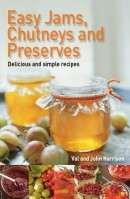 Part One – Artichokes to Leeks
Part One – Artichokes to Leeks
For Mushrooms to Turnips see Freezing Vegetables Preparation &; Blanching Times part 2
Globe artichokes
Remove all outer coarse leaves and stalks, and trim tops and stems. Wash well in cold water, add a little lemon juice to the blanching water. Blanch a few at a time, in a large container for 7–10 minutes. Cool, and drain well before freezing.
Jerusalem Artichokes
Treat Jerusalem Artichokes as potatoes. Although normally you would store potatoes in sacks, sometimes you have a glut of damaged potatoes that will not keep too well and freezing, if you have room, avoids wasting them.
They are best frozen in a cooked form, as partially cooked chips (fully cooked ones are not satisfactory), prepare as usual and part fry in deep fat for 2 minutes, cool and freeze on a tray to keep separate prior to bagging, ready for final frying.
Asparagus
Grade into thick and thin stems. Wash in cold water and blanch thick stems for about 4 minutes and thin for just 2 minutes. Cool and drain, then tie into small bundles, packed tips to stalks, separated by non-stick paper. Generally asparagus doesn’t work too well as a frozen vegetable and bottling or making into a soup and freezing that works best.
Aubergines
Peel and cut roughly into 1 inch (2.5cm) slices. Blanch for 4 minutes, chill and dry on absorbent paper. Pack in layers, separated by non-stick paper. You can also fry the slices instead of blanching and then freeze. This doesn’t work too well, but is usable in a dish like mousakka.
French beans
These always come in flushes so a glut is usual. Most varieties freeze very well but some of the waxier types are better fresh. Just wash, top and tail and then blanch for 2 minutes before chilling and freezing.
Runner beans
These freeze well. Prepare as you normally would and blanch for 3 minutes before cooling and freezing.
Broad beans
Mature beans actually seem to benefit from freezing, younger small beans freeze well also. Just shell and blanch for 3 minutes before cooling and freezing.
Beetroot
Beetroot is normally stored as for root crops but we like the convenience of being able simply to take one ready prepared from the freezer for a salad, so we freeze some small beetroot for this. Wash well and rub the skin off after blanching. Small beets up to 3 inches (7.5cm) in diameter need blanching for 10 minutes and larger beets should be cooked until tender, 45–50 minutes. A pressure cooker will reduce the time and save energy for this.
Freeze the smaller beets whole but slice or dice larger beets or they will take too long to freeze. If you blanch for a shorter time, you will find they are rubbery when defrosted.
Broccoli and calabrese
Trim off any woody parts and large leaves. Wash in salted water, and cut into small sprigs. Blanch thin stems for 3 minutes, medium stems for 4 minutes and thick stems for 5 minutes. Cool and drain well. The thick woody stems and leaves will work well in a soup.
Brussels sprouts
Prepare as you would normally, just remove any outer leaves and wash thoroughly. Blanch for 3 minutes, chill and freeze. When you defrost, they’re effectively cooked enough so we just toss in melted butter with salt and black pepper until they’re warmed through.
Cabbage
You can freeze cabbage but it tends to be soggy when defrosted, so we cook like Brussels sprouts. Don’t forget that a cabbage will store well for several weeks in somewhere cool, dark but airy. You can also wrap in clingfilm and keep well in the fridge for a few weeks.
Wash and shred the leaves, then blanch for just a minute before chilling, draining and freezing.
Carrots
With damaged maincrop carrots that will not store well, we cook them in the pressure cooker and then mash with a little salt, too much butter and pepper. This freezes well and can also be made 50:50 with swede or parsnips.
Cauliflower
Wash, break into small sprigs, about 2 inches (5cm) in diameter. Add the juice of a lemon to the blanching water to keep them white; blanch for 3 minutes, cool, drain and pack
Celeriac
Wash and trim. Cook until almost tender, peel and slice, then freeze when cool.
Courgettes and marrows
Choose young ones. Wash and cut into ½–1 inch (1cm) slices. Either blanch for one minute, or sauté in a little butter. We’ve found these don’t work well but are just about acceptable in a risotto when defrosted.
Fennel
Trim and cut into short lengths. Blanch for 3 minutes, cool, drain and pack.
Kohlrabi
Use small roots, 2–3 inches (5–7cm) in diameter. Cut off tops, peel and dice. Blanch for 1½ minutes, cool, drain and pack.
Leeks
Prepare as normal and then slice fairly thinly (less than 1 inch/2.5cm). Blanch for 2 minutes or sauté in oil. Cool and freeze. They will be soggy when defrosted but fine for adding to casseroles or soups.
FREE – Vegetable Preparation & Blanching Times Chart as pdf to download and print
More Information on Freezing Produce
- Freezers and Freezing Food
- Freezers – Chest or Upright Freezer?
- How to Freeze Food – General Information, Blanching etc.
- Freezing Vegetables – Preparation & Blanching Times Part 1
- Freezing Vegetables – Preparation & Blanching Times Part 2
- Freezing Herbs – How to Freeze Herbs
- Freezing Fruit – How to Freeze Fruits
- Freezer Running Costs – How Much do Freezers Cost to Run
- Freezer Running Costs – Test Results How Much our Freezers Cost
- Running Costs for Freezers Conclusions


